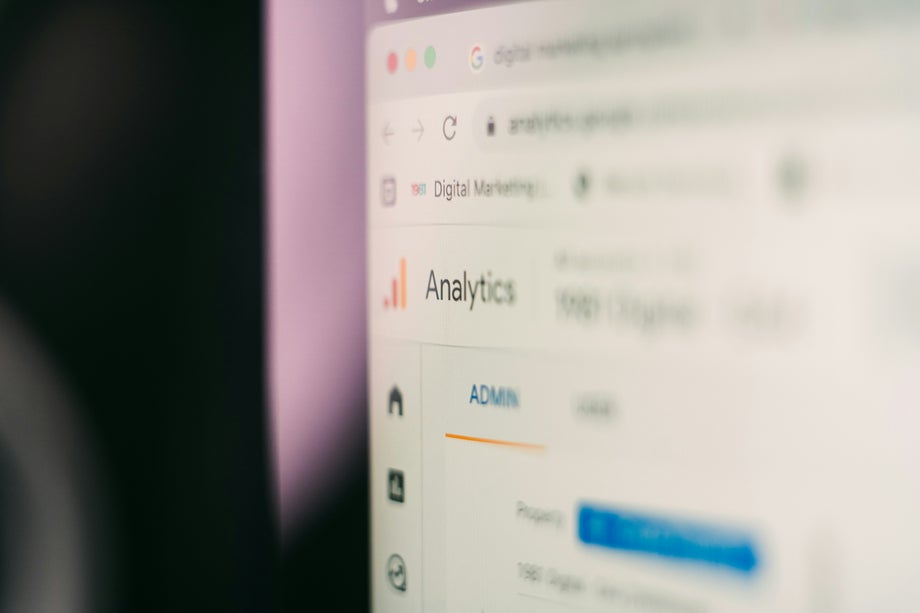

25.07.20225 mins read
Highlights
- The top 3 ways AI impacts innovation
- Examples of AI-led innovation in the real world
- How AI-led innovation means you produce and evaluate more and faster, and speed up research operations
It’s an exciting time to be in business. Every day, there’s a new AI tool or capability, or some tech billionaire suing another. It’s definitely not boring with the likes of Musk, Altman and Zuckerberg keeping us entertained and on our toes.
The real challenge, apart from keeping up with the latest ‘gossip’, is figuring out how you can best use, or benefit from, all of these incredible technologies. It’s a theme I’m hearing repeatedly in conversations with clients and prospects - how can we take AI and use it to innovate and really make a difference for both our internal operations and, importantly, our customers?
Every business leader today is looking for that one thing, that tool or capability or product that will propel them to the top of the table and, if not quite earn them a place in the history books, will at least cement their future and that of their company’s.
Is AI the golden ticket?
According to some, yes.
A recent article I read talked about a study by innovation scholars and published in the California Management Review identifies three key ways in which AI impacts open innovation:
By
- enhancing existing practices through greater efficiency and scalability,
- enabling new forms of collaboration and business models,
- replacing or reshaping traditional open innovation methods with autonomous, AI-driven processes.
Another report claims that studies show AI is predicted to produce the largest productivity increase in history.

And yes, sometimes these findings are biased or projections that are not entirely accurate. However, as listed in this article, numerous examples from Amazon to autonomous vehicles, demonstrate AI-driven efficiencies.
There are many examples. And maybe because we are all getting older and we are hearing a lot about healthcare systems under pressure, I’m drawn to examples such as the Mater Hospital. One of the largest public hospitals in Ireland, it has now become the first hospital in Ireland to establish a centre for AI and Digital Health. Initiatives include the synthetic spinal imaging project, which has developed a generative AI that can convert lumbar spine CT images into synthetic MRI images for presentations of Cauda Equina Syndrome, allowing for better and more robust out-of-hours or emergency care planning and treatment.
As Professor Joe Galvin, consultant cardiologist at the Mater and Clinical Professor at UCD School of Medicine] said and reported by UCD School of Medicine: “AI has the potential to enhance the accuracy of an electrocardiogram (ECG) and radiology scan analysis, reducing the time that a patient has to wait for the results of their diagnosis and, if required, starting their treatment sooner. If a patient suffers from cardiovascular disease, stroke or cardiac arrest, every minute counts. AI’s ability to increase accuracy and speed may be life-saving.”
It’s hard not to be impressed by this and how it might change lives.
For other examples, across a multitude of industries, check out this article https://online.hbs.edu/blog/post/ai-innovation
Not that I think anyone, or many people, would dispute AI’s role in the future.
But consider this excerpt from a recent Forbes article, if there is any doubt.
In an interview with A&S Media East, Lario Lovric, CEO of Aldra Alameen Security Services explained, “Recent market studies reveal that governments of prosperous Gulf oil-producing countries, including the UAE, Saudi Arabia, and Qatar, allocate substantial funds – equivalent to, if not more than, certain European nations – for the advancement of AI-related technologies. This unequivocally underscores AI’s role in shaping futuristic security. Furthermore, the UAE was the first nation in the region to adopt a National AI Foundation strategy in 2017, and it holds the distinction of being the world’s inaugural Ministry for Artificial Intelligence.”
From a technology perspective, this shift in focus means that AI is increasingly viewed as the most important driver of innovation. By making AI the key point of emphasis, expectations increase that future innovations and developments in most spaces will be largely derived from AI. This will include the development of more advanced AI tools or finding new use cases for existing AI applications.
McKinsey’s report The next innovation revolution- powered by AI makes some very ambitious claims about the value of AI-powered innovation.
“Overall, our analysis estimates that the potential annual economic value that could be unlocked by using AI to accelerate R&D innovation is about $360 billion to $560 billion.”
An estimate, they say, could be conservative, because if someone unlocked a previously unimaginable capability, who knows what the outcome might be.
The report then identifies three ways AI technologies can accelerate innovation:
- Increase the velocity, volume, and variety of design candidate generation
- Accelerate the evaluation of candidates through AI surrogate models
- Accelerate research operations.
#1 Basically, produce more and faster.
The example given is of a retailer that used gen AI tools to create dozens of alternative 3D store configurations, rendered with photorealistic fidelity. Prior to AI, a designer using traditional computer-aided design and rendering tools might have created only a handful of sketches, at a much lower level of fidelity. But now that we can create volumes at speed, there are so many more choices/designs to consider. And because there was such a large selection, it led to the discovery of certain aesthetic decor features that appealed to consumers but were not in the initial design parameters.
#2 Evaluate more and faster
This is linked to the previous one, but basically, the idea is akin to the digital twin in that, according to McKinsey, these AI-style surrogate models do not just imitate the “thinking” that people do; they also predict the outcomes of physical phenomena in the world.
Here’s the example from the report.
Computational fluid dynamics is used to simulate the aerodynamic performance of aircraft (and automobiles, including for racing). Designers are now using neural network models trained on wind tunnel and CFD data to predict hundreds of results in a few seconds for a range of flow velocities and angles that were not included in the wind tunnel testing or CFD simulations, which would have otherwise taken hours or days to produce.
Again, the benefit is not just about pace but volume. Engineers are now able to test multiples to produce the best one. Plus, leveraging other automated systems can then check manufacturability, reliability, product cost, and testing at a speed not possible in the past.
#3 Speeding up research operations
I think this value add gets a lot of attention. Not to say that the other two don’t, but our obsession with data and data analytics does mean this benefit is highlighted regularly. AI’s ability to move much faster, take in large amounts of data, analyse it, and generate insights is consistently touted.
Thus making it a natural fit to highly regulated industries such as pharmaceuticals and aircraft manufacturing, where there are significant documentation requirements— for regulatory filings, engineering change orders, and other required documentation.
My final thoughts for today are this: AI is an incredible tool, and we all probably feel a little more comfortable writing stuff now that we have ChatGPT and co to help us.
But to limit its usage to drafting or editing is a huge mistake. As my colleague, our CTO Kevin Magee says, “AI enables us to unleash our creativity. That from coders to designers and product managers, we can now collectively create, design and build in volumes and ways previously unimaginable.”
We are truly only limited by our imagination.


